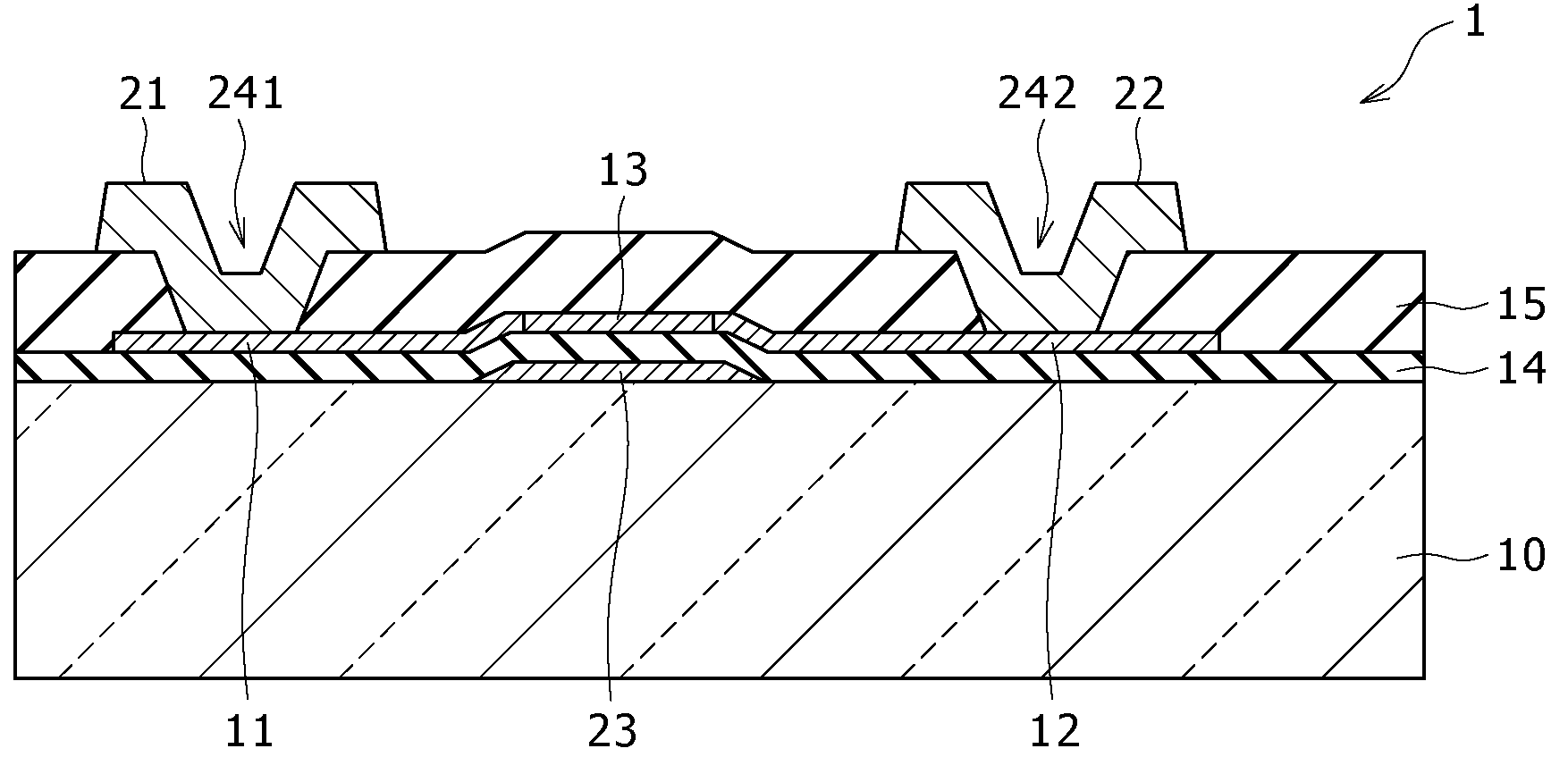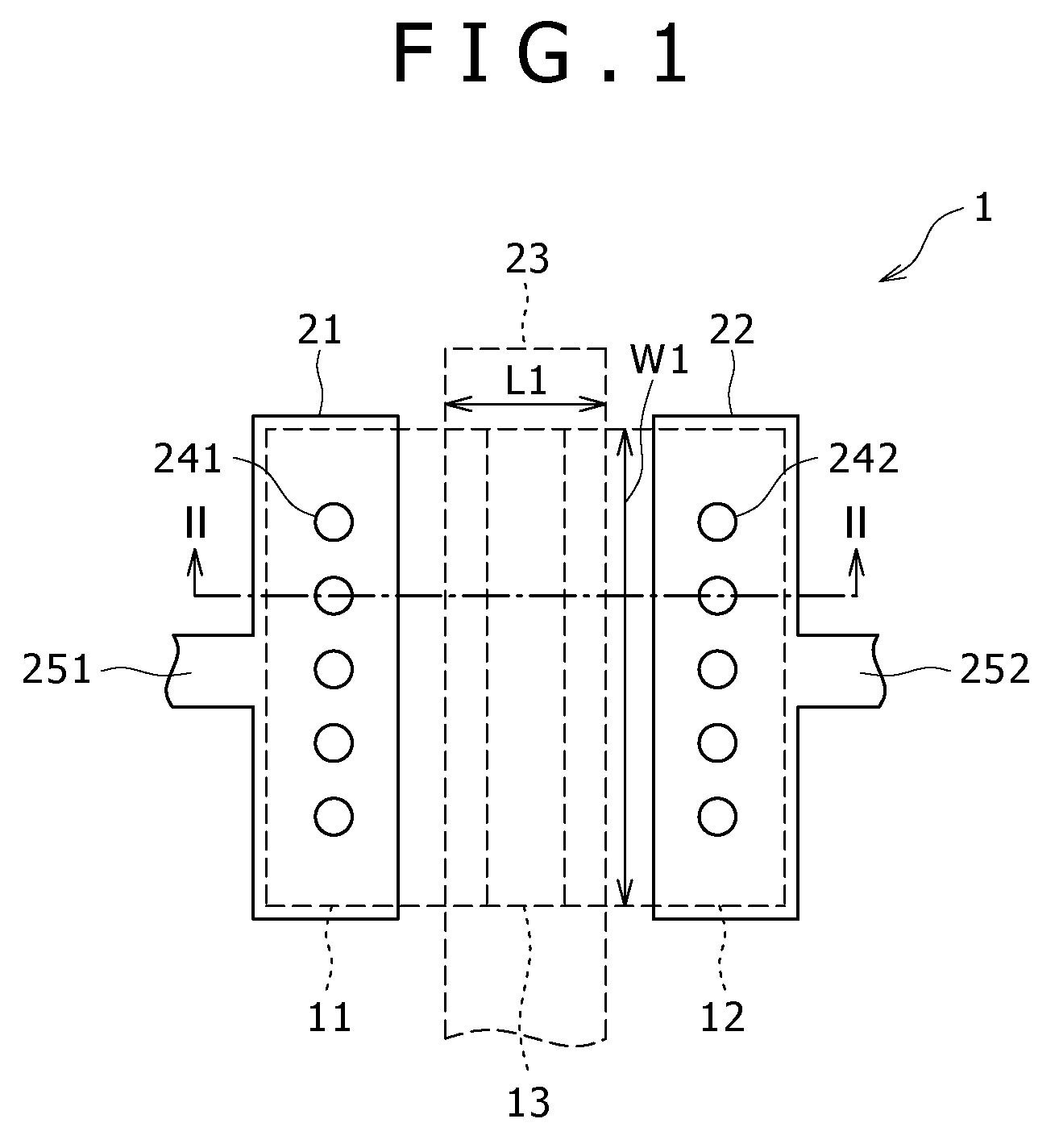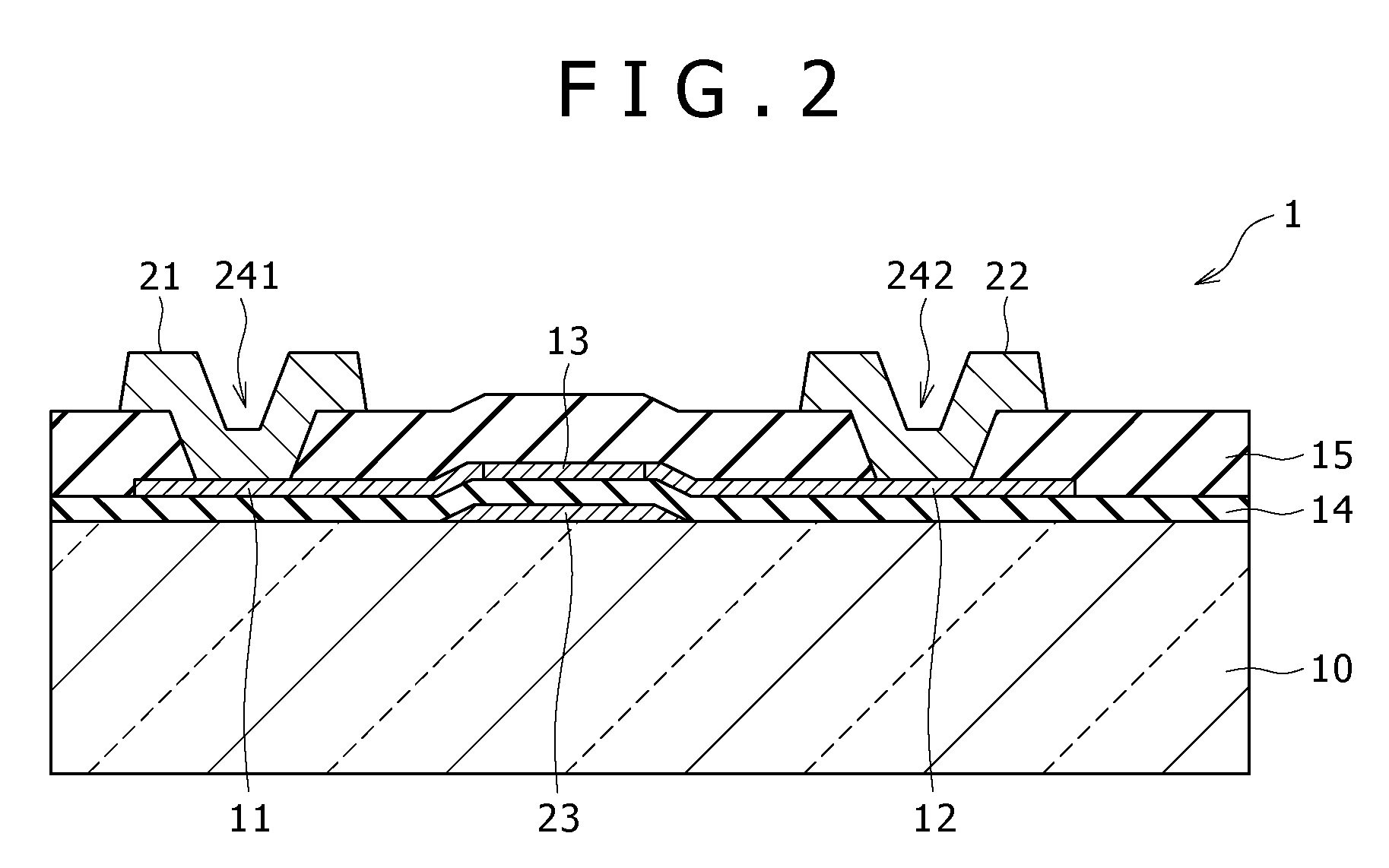Light-receiving element and display device
- Summary
- Abstract
- Description
- Claims
- Application Information
AI Technical Summary
Benefits of technology
Problems solved by technology
Method used
Image
Examples
modification examples
[0071]Modification examples of the embodiment of the present invention will be described below. The same component in the modification examples as that in the above-described embodiment is given the same numeral, and the description thereof is omitted.
first modification example
[0072]FIG. 9 shows the planar structure of a light-receiving element (light-receiving element 1A) according to a first modification example. FIG. 10 shows the sectional structure of the light-receiving element 1A along line IV-IV in FIG. 9. In the light-receiving element 1A, the conductivity type of the impurity (p-type impurity) in a light-receiving part 13A is the p-type, and the voltage applied to the gate electrode 23 is positive potential. That is, the light-receiving part 13A is a p− layer.
[0073]Also in the light-receiving element 1A of the present modification example having such a configuration, generation of photocurrent can be facilitated and the light-reception sensitivity can be sufficiently enhanced due to the same operation as that of the above-described embodiment.
second modification example
[0074]FIG. 11 shows the sectional structure of a light-receiving element (light-receiving element 1B) according to a second modification example. The above-described embodiment and the first modification example relate to a bottom-gate light-receiving element in which the gate electrode 23 is formed under the p+ layer 11, the n+ layer 12, and the light-receiving part 13. In contrast, the light-receiving element 1B is a top-gate light-receiving element in which a gate electrode 23B is formed over the p+ layer 11, the n+ layer 12, and the light-receiving part 13. In the light-receiving element 1B, interlayer insulating films 161 and 162 and a gate insulating film 14B are formed.
[0075]Also in the light-receiving element 1B, the voltage applied to the gate electrode 23B is positive potential if the conductivity type of the impurity (p-type impurity) in the light-receiving part 13 is the p-type. On the other hand, the voltage applied to the gate electrode 23B is negative potential if the...
PUM
 Login to View More
Login to View More Abstract
Description
Claims
Application Information
 Login to View More
Login to View More - Generate Ideas
- Intellectual Property
- Life Sciences
- Materials
- Tech Scout
- Unparalleled Data Quality
- Higher Quality Content
- 60% Fewer Hallucinations
Browse by: Latest US Patents, China's latest patents, Technical Efficacy Thesaurus, Application Domain, Technology Topic, Popular Technical Reports.
© 2025 PatSnap. All rights reserved.Legal|Privacy policy|Modern Slavery Act Transparency Statement|Sitemap|About US| Contact US: help@patsnap.com



